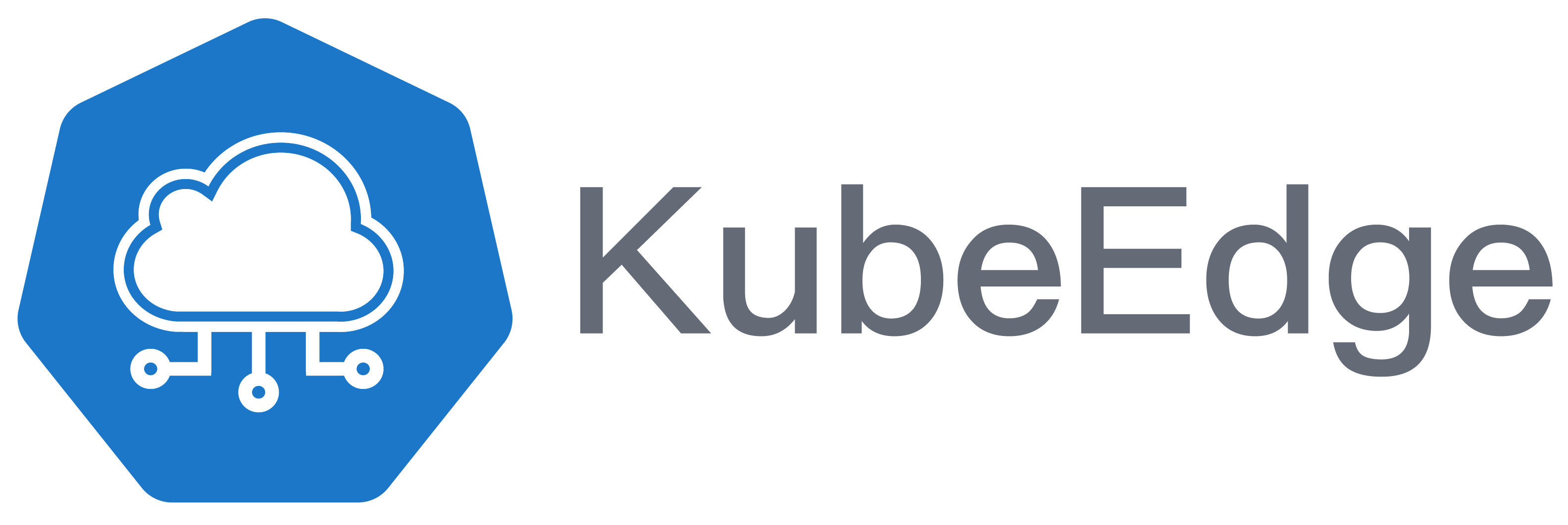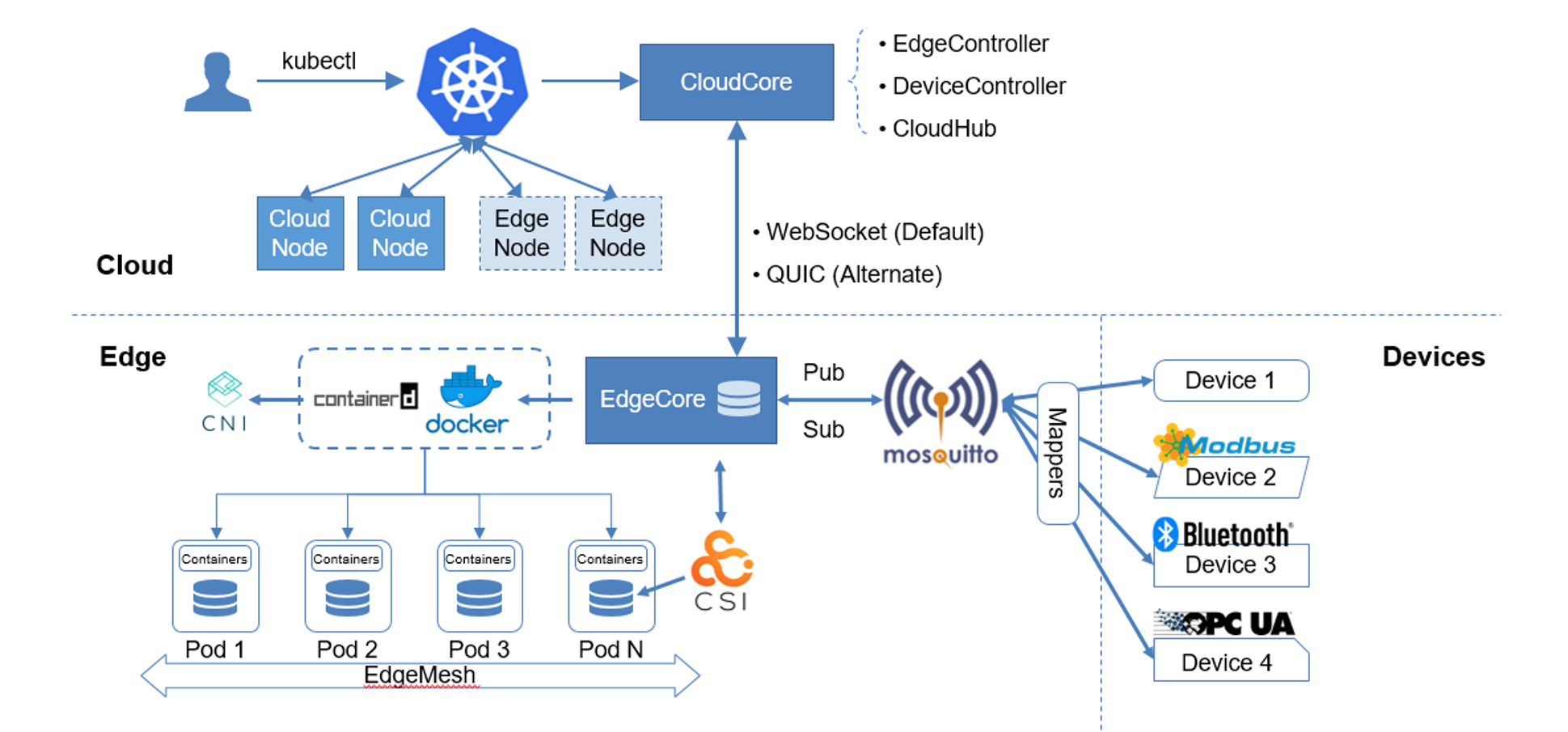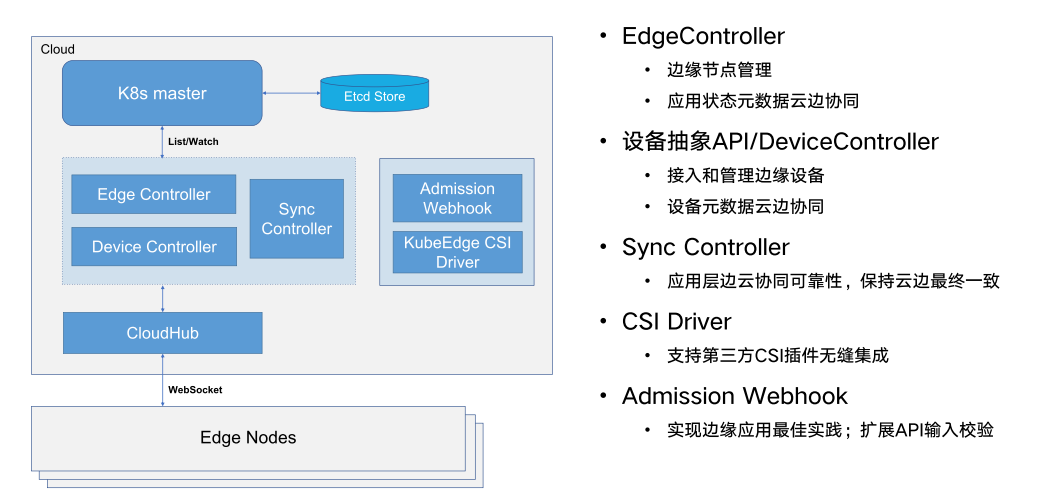Several architectures for large-scale IoT edge container cluster management - 4-Kubeedge
This article was last updated on: February 7, 2024 pm
Review above
- Introduction to several architectures for large-scale IoT edge container cluster management - 0-edge containers and architectures
- Several architectures for large-scale IoT edge container cluster management - 1-Rancher+K3s
- Several architectures for large-scale IoT edge container cluster management - 2-HashiCorp solution Nomad
- Several architectures for large-scale IoT edge container cluster management - 3-Portainer
📚️Reference:
IoT Edge Computing series
Kubeedge

Brief introduction
KubeEdge is an open-source system for extending native containerized application orchestration to hosts at the edge. Built on top of Kubernetes, it provides basic infrastructure support for networking, application deployment, and metadata synchronization between the cloud and the edge.
Kubeedge’s goal is to build an open platform for edge computing, extending native containerized application orchestration capabilities to hosts at the edge, built on top of Kubernetes, to provide basic infrastructure support for networking, application deployment, and metadata synchronization between the cloud and the edge.
Reference architecture
- “Cloud”: Kubernetes cluster + CloudCore (including: CloudHub, EdgeController, DeviceController)
- “Edge”: EdgeCore
- Edged: A lightweight Kubelet implementation
- EdgeHub
- DeviceTwin
- MetaManager
- ServiceBus
- “End”: Mappers for various types of IoT devices



Program advantages
- CNCF’s first cloud-native edge computing project: Based on Kubernetes, a lot of optimizations and adaptations have been made for the edge. Powerful and complete. There are many developers around the world.
- massive: A single cluster exceeded 100,000 edge nodes
- Edge device management: Perfect edge device management, support a variety of edge device communication protocols, such as MQTT, Modbus, Bluetooth, OPC UA, etc., support custom plug-ins to extend edge device protocols.
- 100% compatible with Kubernetes native capabilities: Enable users to use Kubernetes native APIs to manage edge applications in a unified manner
- Reliable list-watch interface at the edge
- Lightweight: Lightweight components for resource-constrained scenarios, ~70MB memory occupancy
- Support complex edge-cloud network environments: Bidirectional multiplexed edge-cloud message channel, supporting edge in VPC; The reliable incremental synchronization mechanism of the application layer supports work in high-latency, low-quality network environments
- Edge autonomy: Support edge offline autonomy: edge metadata persistence and edge DNS ensure service operation and fault recovery when the edge is offline (in contrast, edge autonomy of K3S is considered “pseudo-edge autonomy”); Supports edge data streaming and defines processing work such as edge data cleaning and data analysis
- Integrated edge-cloud resource scheduling and traffic collaboration: Support hybrid management of edge nodes (edged nodes, which is also a node in Kubernetes’ view) and cloud nodes, providing edge cloud data communication and edge data communication
- DMI architecture device management: Separation of management plane data from business plane data
- EdgeMesh: Cross-cloud-edge, edge-edge application access communication; The edge has built-in domain name resolution capabilities and does not rely on central DNS. Support L4, L7 traffic governance; Support a consistent service discovery and access experience across edge clouds; Cross-subnet communication
- Sedna: AI edge-cloud collaboration suite
Scheme disadvantages
- High complexity: Kubeedge is based on Kubernetes, but has made a large number of functional extensions for edge computing scenarios, which makes it necessary to use Kubeedge well, not only to understand Kubernetes, but also to understand Kubeedge, and also to understand edge business/edge communication protocols. The introductory learning curve is extremely steep.
- Chinese the quality of the document is average: Check the documents Chinese Kubeedge official website and find the following problems: the documents are not updated after the version update; Blunt machine translation of English documents; There is a problem with the document organization structure, and it is difficult to “quick start”; There are even low-level document typography disorders, markdown confusion and other problems.
- Typical negative cases:Deploy with Keadm | KubeEdge is an open platform that supports edge computing, It makes my brain hurt 😂😂😂 to see
- In fact, there is a lot of resource occupation: If you only install edgecore or edged, the resource usage is relatively controllable. If you need to use more features, such as EdgeMesh, Sedna, edge device management, and Kubernetes CSI CNI implementation, then these functions need to be enabled or additional plugins installed. Causes resource usage to rise.
- Edge container management and edge computing services are coupled to a certain extent: In addition to providing basic functions for edge container management, Kubeedge also provides a large number of functions that are closely related to the edge computing business, which may lead to departmental coupling.
- Automated O&M is difficult: The other 3 solutions will provide one-click installation of O&M scripts or automated deployment/O&M functions, Kubeedge is relatively lacking in this aspect, and automated O&M capabilities need to be explored by themselves.
Keep reading
Several architectures for large-scale IoT edge container cluster management - 5 - Summary